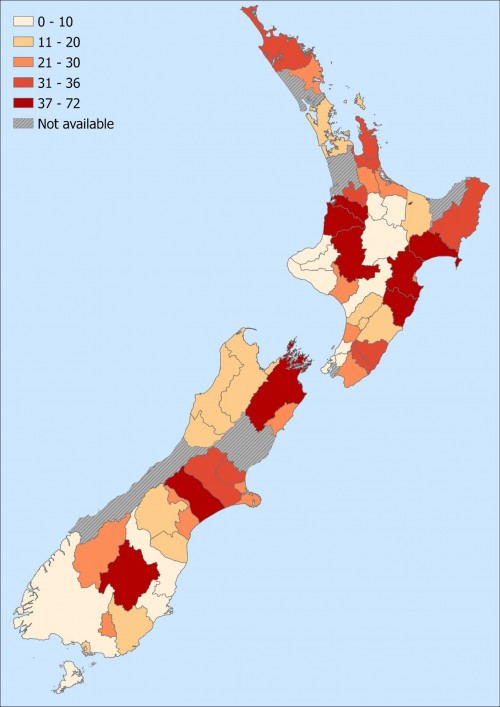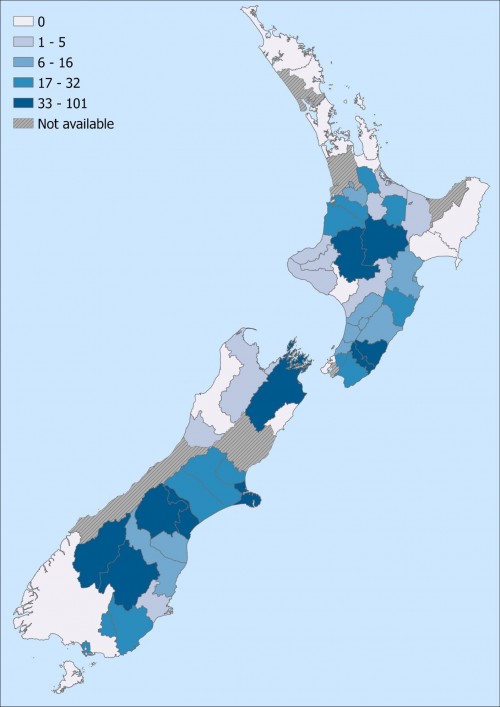Temperature
This section describes changes in Aotearoa New Zealand's temperatures over time, and who might be most at risk of health impacts from temperature extremes.
Hot days are more common in northern and eastern New Zealand
There will very likely be an increase in the number of hot days (maximum temperatures above 25°C), particularly in the north of the North Island. At the same time, there will very likely be a decrease in the number of cold days (minimum temperatures below 0°C), particularly in the South Island.
Data from 2024 show hot days were more common in the north and east of the North Island and isolated pockets of the South Island (Figure 1). Cold days were most frequent in parts of the South Island, particularly Otago and Southland (Figure 2).
Figure 1: Number of days with maximum temperatures over 25°C, 2024, by Territorial Authority (TA)

Figure 2: Number of days with minimum temperatures under 0°C, 2024, by Territorial Authority (TA)

Information about the data
Number of hot days and number of cold days
Source: DataHub. NIWA's National Climate Database
Definition: Climate station data of the daily maximum and minimum temperatures from around New Zealand was sourced from the National Climate Database provided by the National Institute of Water and Atmospheric Research (NIWA). One climate station was selected per territorial authority, based on their proximity to the population-weighted centroid of each TA (2018 Census data). The number of hot days (days with a maximum air temperature above 25°C) and the number of cold days (days with a minimum temperature below 0°) was counted for each year by TA. Only years with more than 90% of valid data were counted. Data was compared to the most recent Climate Normal Period, 1991-2020, where the 30-year average acts as a benchmark against which more recent observations can be compared to.
